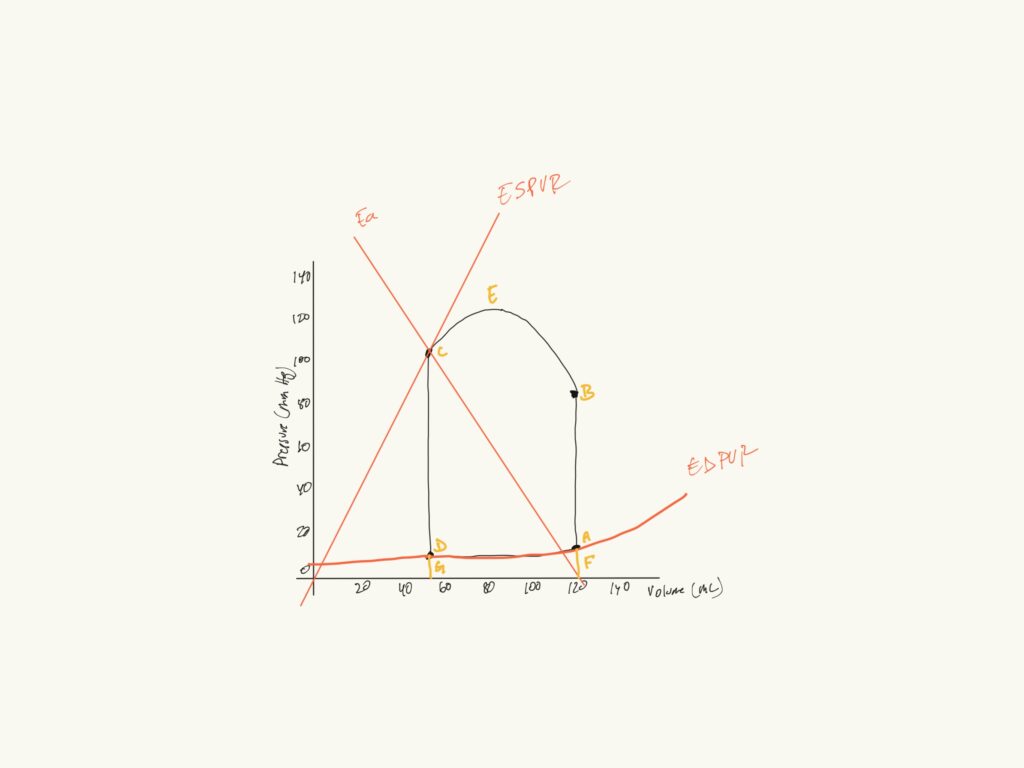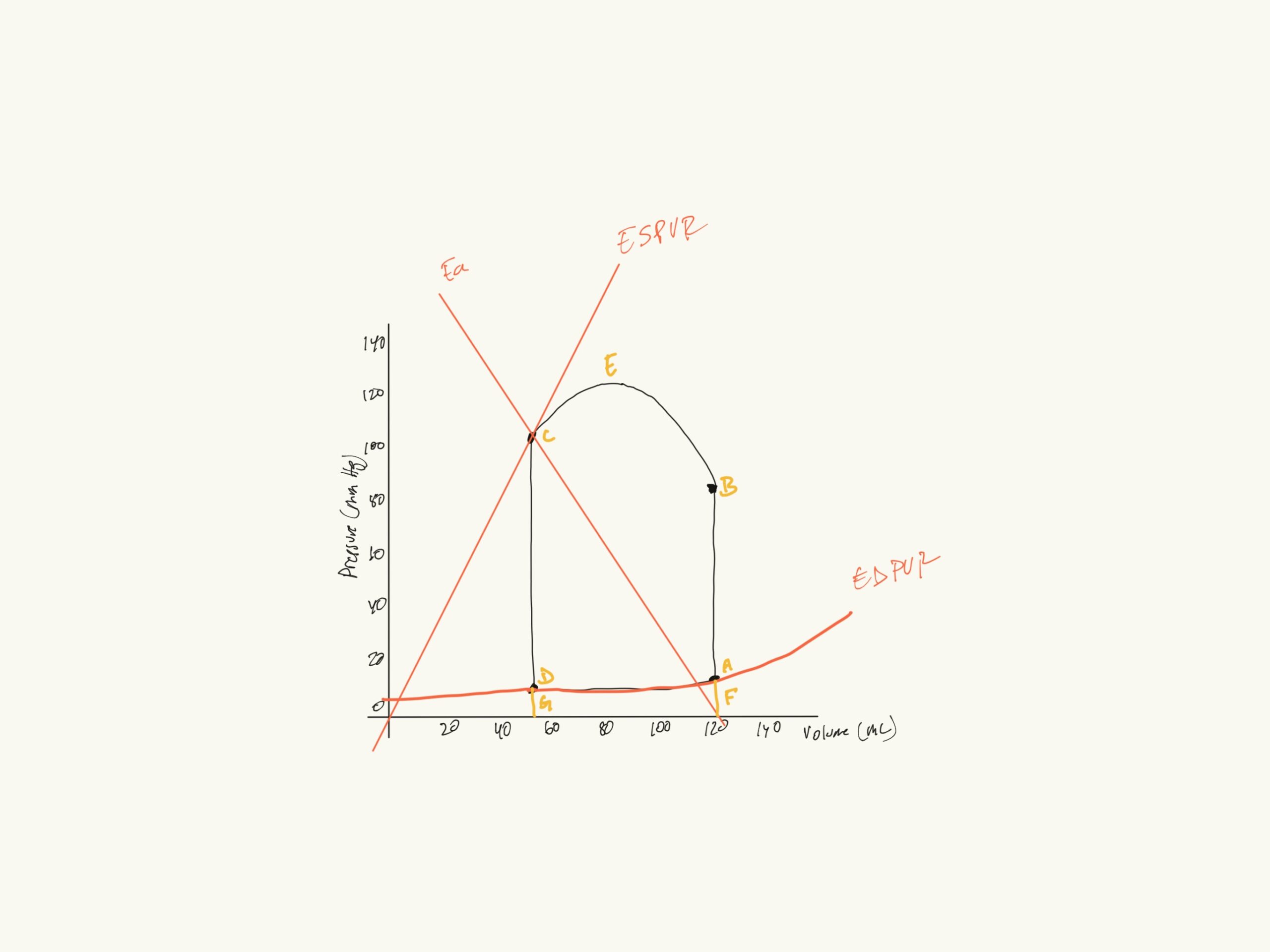Normal Pressure-Volume Loop

A – Mitral Valve Closure
B – Aortic Valve Open
C – Aortic Valve Closure
D – Mitral Valve Open
E – Systolic Blood Pressure
F – End Diastolic Volume
G – End Systolic Volume
B is also Diastolic Blood Pressure
A -> B: Isovolumetric Contraction
C -> D: Isovolumetric Relaxation
G -> F: Stroke Volume
ESPVR = End systolic pressure-volume relationship ~ Contractility
EDPVR = End diastolic pressure-volume relationship ~ Preload
Ea = Arterial elastance ~ Afterload
Afterload
Afterload is the pressure the heart must overcome to pump blood in ventricular systole. Afterload cannot be calculated with a pressure-volume loop. Effective arterial elastance is an index of afterload and is used as a surrogate marker.
Where, [math]E_A[/math] is Arterial Elastance,
[math]P_{es}[/math] is End Systolic Pressure,
SV = Stroke volume
Contractility
Contractility is demonstrated on the PV diagram as the end-systolic pressure-volume slope, also known as the end-systolic elastance. Contractility is affected by afterload.
Ejection fraction (EF) can also be elucidated from this diagram
Where, EF = Ejection fraction
EDV = End diastolic volume
ESV = End systolic volume
It should be evident that EF is not the same thing as contractility. EF is one marker of left ventricular systolic performance. Of note, EDV – ESV is stroke volume (SV).
As a side note, myocardial contraction fraction is another parameter of left ventricular systolic performance.
Preload
Preload is the degree of ventricular end-diastolic pressure (LVEDP). Preload is demonstrated as the end-diastolic pressure-volume relationship. End diastolic volume can be used as an estimate for preload.


Leave a Reply
You must be logged in to post a comment.